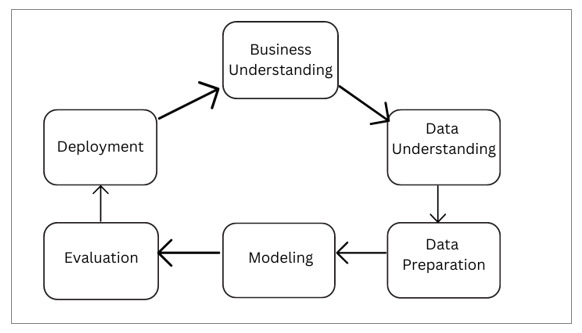
 Data Structure
Data Structure Networking
Networking RDBMS
RDBMS Operating System
Operating System Java
Java MS Excel
MS Excel iOS
iOS HTML
HTML CSS
CSS Android
Android Python
Python C Programming
C Programming C++
C++ C#
C# MongoDB
MongoDB MySQL
MySQL Javascript
Javascript PHP
PHP
- Selected Reading
- UPSC IAS Exams Notes
- Developer's Best Practices
- Questions and Answers
- Effective Resume Writing
- HR Interview Questions
- Computer Glossary
- Who is Who
Data Science Fundamentals
Data science is an emerging field in which we try to extract useful insights and knowledge from the data. Data science is using data to answer questions. Nowadays data is the most important aspect for every business and startup and with the exponential growth in data volume, data science has become an increasingly important field. Data science is the combination of various fields such as statistics and machine learning.
In this article, we will discuss the fundamentals of data science and the tools and techniques used in the field.
Data Science Process
The data science process is the set of steps that we take in order to get some meaningful insight and knowledge from the data. There are a number of different ways to describe the process, but one of the most common is the CRISP-DM which stands for Cross-Industry Standard Process for Data Mining.
CRISP-DM(Cross-Industry Standard Process for Data Mining) is a commonly used strategy for implementing data science and machine learning projects. It provides a structured approach for various stages of the project, from understanding the business problem to deploying the final solution.

CRISP-DM consists of the six steps described below ?
Business Understanding ? The first and most important step is to understand and identify the problem statement that we are trying to solve. This involves steps such as identifying the goal of the project, defining the scope, and understanding the constraints of our problem statement.
Data Understanding ? The second step of CRISP-DM is to collect the data that is required for our problem statement and explore and analyze that data. This involves identifying the source of the data, understanding the data format, and exploring the data to get insights about the data and identify any issues in the data. One needs to have domain knowledge about the problem statement because domain knowledge helps in understanding the results and getting insights about the results.
Data Preparation ? The third step is to clean, transform and prepare the data for further analysis. Cleaning involves dealing with the missing values in data and filling them with appropriate values. Transforming involves converting the data into a suitable format in which it will be easy for us to analyze the data.
Modeling ? The fourth step is to build a machine-learning model that can be used to make predictions or classify data. This involves splitting the data into train data and test data, training the model on the train data, and evaluating the model's performance on the test data.
Evaluation ? The fifth step includes evaluating the model's performance and improving the model if necessary. This involves testing the model on the test data and using performance metrics to assess its performance.
Deployment ? The final step is to deploy the model and use it to make predictions or classify new data. This involves integrating the model into a larger system and monitoring its performance over time.
Data Science Tools
Programming Languages ? There are many kinds of programming languages that can be used in data science but Python and R are the most popular ones. Python is a general-purpose programming language that is easy to learn and can be used in various fields like Backend development, Desktop application development, and data science. Python has a large number of inbuilt libraries for data science. R is a language that is specifically designed for data analysis and has a large number of built-in functions for statistical analysis.
Data Visualization Tools ? Data visualization is the process of representing our data analysis results in a visual format such as charts, graphs, and maps. It is a very important tool in data science because it helps us to get insights about the data in a more intuitive way. Some popular visualization tools include Matplotlib and Seaborn.
Big Data Technologies ? Sometimes we need to process a large volume of data which is not possible to process using traditional techniques so we use big data technologies for these kinds of processing. Hadoop, Spark, and NoSQL databases are a few of the well-liked big data technologies.
Machine Learning Libraries/Frameworks ? Machine learning libraries/frameworks play a crucial role in data science and machine learning tasks by providing pre-built tools, algorithms, and functionalities to simplify and accelerate the development and deployment of machine learning models. These libraries/frameworks, such as scikit-learn, TensorFlow, and PyTorch, offer a wide range of algorithms for both supervised and unsupervised learning, including regression, classification, clustering, and deep learning.
Data Science Techniques
1. Data Preprocessing
Handling Missing Values ? Strategies for dealing with missing data, such as imputation techniques (e.g., mean imputation, regression imputation) or deletion of incomplete samples.
Handling Missing Values ? Strategies for dealing with missing data, such as imputation techniques (e.g., mean imputation, regression imputation) or deletion of incomplete samples.
Normalizing or Standardizing Data ? Techniques for transforming numerical features to a common scale, such as min-max scaling or z-score normalization.
Splitting Data ? Dividing the dataset into training, validation, and testing sets to assess and evaluate the performance of machine learning models accurately.
2. Supervised Learning Algorithms
Linear Regression ? A regression technique used to model the relationship between a dependent variable and one or more independent variables.
Logistic Regression ? A classification algorithm used to model the probability of a binary or categorical outcome.
Support Vector Machines (SVM) ? A powerful algorithm used for both classification and regression tasks, which creates a hyperplane to separate classes or predict numerical values.
Random Forests ? An ensemble learning method that combines multiple decision trees to make predictions, often used for classification and regression tasks.
3. Unsupervised Learning Techniques
Clustering ? Algorithms that group similar data points together based on their features. Common clustering techniques include k-means, hierarchical clustering, and DBSCAN.
Dimensionality Reduction ? Techniques used to reduce the number of features or dimensions in a dataset while preserving important information. Principal Component Analysis (PCA) is a widely used dimensionality reduction method.
4. Natural Language Processing (NLP)
Text Classification ? The task of automatically categorizing text documents into predefined classes or categories.
Sentiment Analysis ? Determining the sentiment or emotional tone expressed in a piece of text, often used for analyzing social media sentiments or customer reviews.
Language Translation ? The process of translating text from one language to another using machine learning models and techniques.
Named Entity Recognition ? Identifying and classifying named entities (e.g., names of persons, organizations, locations) in text documents.
5. Feature Engineering
Scaling ? Rescaling features to a standard range (e.g., normalization, standardization) to ensure their comparability and prevent bias.
Encoding Categorical Variables ? Converting categorical data into numerical form to make it suitable for machine learning algorithms.
Creating Derived Features ? Generating new features from existing ones to capture additional information or improve model performance.
Handling Missing Data ? Techniques for dealing with missing values in the dataset, such as imputation or deletion.
Conclusion
In this article, we have discussed the data science process and data science tools and techniques. In today's world, the most valuable thing that a company holds is data, so it has become necessary for companies to analyze and visualize the data to find the solutions to the business problem that can help them to grow their business. By mastering the fundamentals of data science you can gain skills that can be applied to a wide range of industries and domains.

